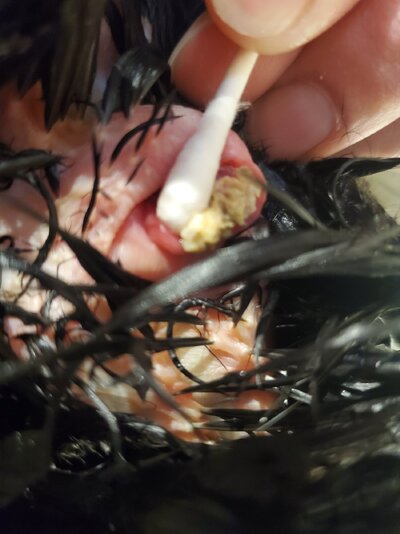- Jul 14, 2011
- 61
- 18
- 111
Hello, Please read the entire thing as I've had some criticism elsewhere when people don't read ot all. I asked on some other groups I'm in and many thought this is vent gleet but she has NO DISCHARGE and she's staying really clean but she never has solid poops. When checking her vent area after an epsom bath I found out she had this chunky build up of whitish yellow stuff that is like a scab or something which keeps coming back inside the vent. Initially I did consult a vet before I discovered the chunky stuff inside the vent. We had just treated (off label) with Ivermectin for lice then when the poop didn't get solid for this lady I brought her inside. We did ACV for a few days then tried CORID because the vet said it might fit where we had just done Ivermectin and it didn't look like vent gleet. The CORID did seem to help! On day 3 her poop got more solid then back to runny by day 4. We did vitamins after the CORID. We have now done 5 days of canestin orally and cream inside vent, with no improvement. I'm switching to monistat today just to rule out the yeast. Ssshe had a few bad days. At one point she stopped eating but now she's happy and eating without issues. No egg laying since i brought her in. Not sure if she ever did yet or when it stopped if she was laying. She is less than a year old. Has anyone ever seen/cured something like this?




